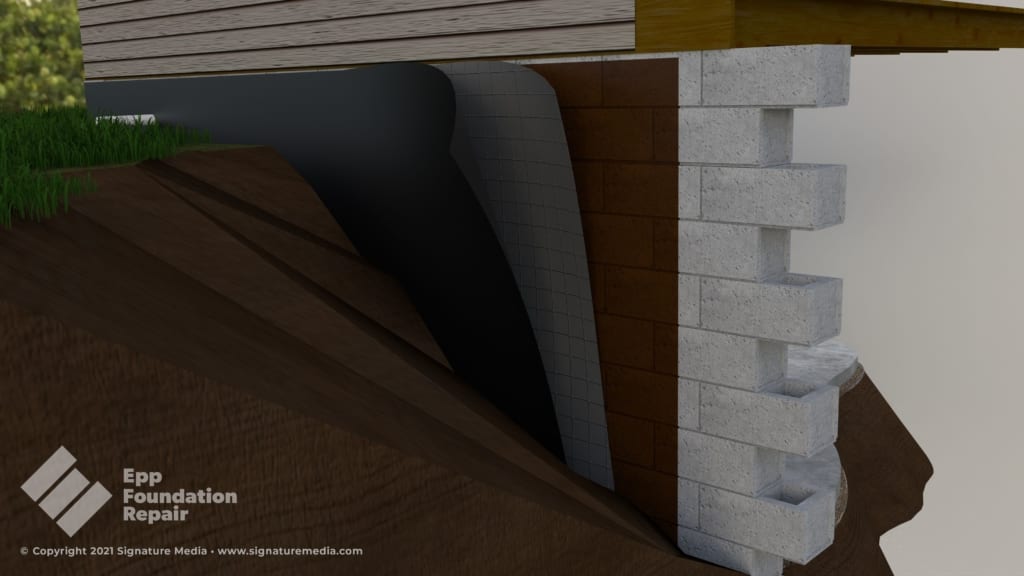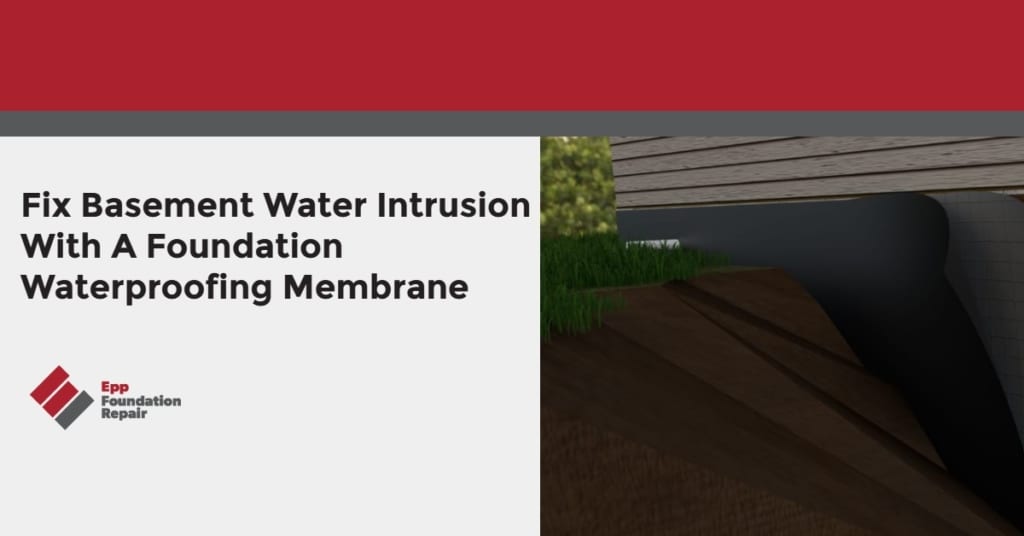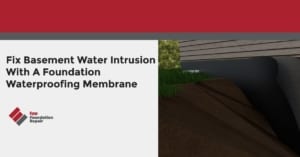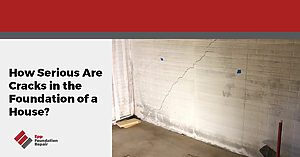What is a foundation waterproofing membrane?
A foundation waterproofing membrane is an exterior basement waterproofing solution applied directly to the outside of the foundation (i.e., basement) wall in order to stop water intrusion. It comes either in liquid form or in sheets. The liquid type of foundation coating is either brushed or sprayed on (the applier controls the thickness), while the sheet-based waterproofing membrane is applied to the wall following a primer.
Most homes built today have an exterior foundation waterproofing membrane applied during construction, right after the foundation is poured. If this membrane fails, interior waterproofing is usually the most cost-effective option. While it is possible to excavate and re-do the exterior membrane, it will probably cost more.

Benefits of an exterior waterproofing membrane
An exterior waterproofing membrane keeps water from getting into your basement through the foundation wall. Stopping water intrusion prevents dampness – which can lead to mold growth – and allows you to store valuables in your basement without worry. Of course, a dry basement is also a comfortable living space.
Keep in mind that exterior waterproofing is usually more expensive than interior waterproofing solutions and is typically only used when it is impractical to install an interior system.
How do you install a foundation waterproofing membrane?
Installation starts by excavating around your foundation so that the exterior foundation wall is exposed down to the footer. The concrete wall is then cleaned, and if necessary, the contractor will repair any problems.
The next step involves applying either a liquid waterproof membrane or a sheet-based waterproof membrane to the wall (A primer usually goes on before the sheet-based membrane).
If the soil around the foundation is wet, the contractor might choose to install a drainage system to carry water away from the foundation and prevent hydrostatic pressure from building up.
The last step involves putting back the excavated dirt.
What is the difference between waterproofing and damp proofing?
Waterproofing keeps both moisture and water out of your basement. Damp proofing merely stops the moisture present in wet soil from getting into your basement. Many people do damp proofing and call it “waterproofing’’.
The “old school” damp-proofing method was to apply tar to the outside of the foundation wall. While this can prevent – to a certain extent – moisture in the soil from coming through your basement wall, it doesn’t stop water from accumulating in the soil. When water accumulates in the ground outside your basement wall, it creates hydrostatic pressure. This pressure, pushing against the wall, can eventually cause the wall to bow inward and even crack. In fact, hydrostatic pressure can push moisture through the damp proofing tar.
If you live in a relatively dry area with little rainfall, damp proofing may be enough. If you’re not sure, it’s best to waterproof, especially if you want to use your basement as a living space.
Read also: Common causes of basement leaks
Solving the hydrostatic pressure problem with an exterior French drain
By channeling water away from your home, French drains increase foundation drainage and prevent hydrostatic pressure from building up in the soil outside your foundation wall.
A French drain system consists of a perforated pipe in a slightly sloped ditch filled with gravel. It can be installed either around the outside perimeter of your foundation or inside, under your basement floor. Its job is to channel water away from your home’s foundation via gravity or a sump pump.
French drains encourage foundation drainage and are very effective against hydrostatic pressure. However, they can be major construction projects. Installing them around the outside perimeter of your foundation means excavation down to the footer. Installing them inside means using a jackhammer to break up the floor. Therefore, they’re not something you should consider as a DIY project.
When it comes to waterproofing a foundation, there are various ways to get the job done, and it will often require using more than one method. This is why some type of foundation waterproofing membrane material is usually installed along with a French drain.
Who do I contact for basement waterproofing?
If you have a wet basement and you’re interested in how an exterior foundation waterproofing membrane can help you achieve a waterproof foundation, contact an experienced foundation repair contractor in your area. They will perform an inspection (most do it for free) and then tell you which waterproofing method is right for your particular problem.
We serve Lincoln, Omaha, Grand Island, Kearney, NE and more with basement waterproofing services. Call us to schedule an inspection and receive an estimate based on your needs.







